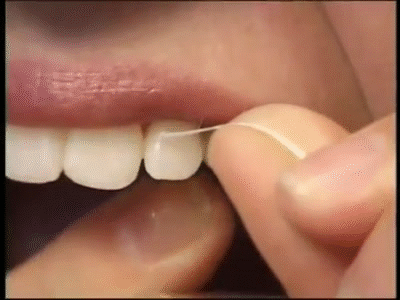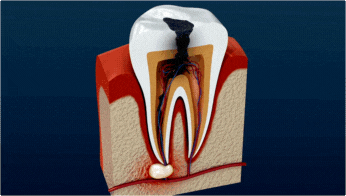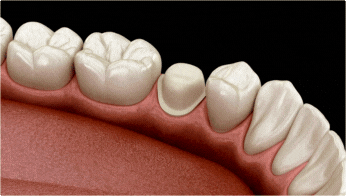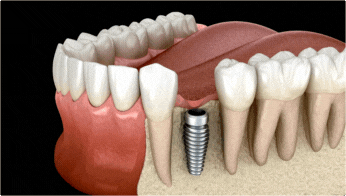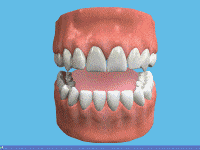Our Services
Step into a new era of dental care that's designed around you—book your appointment today and experience our innovative approach to oral health. We challenge the conventional with cutting-edge technology and personalized care that redefines what visiting the dentist can be.
Check Ups and Hygiene
What Is Involved in a Professional Dental Cleaning?
A professional dental cleaning begins with an initial examination of your mouth, gums, and teeth. This may include X-rays and a dental scan if needed, to help your Dentist or Oral Health Therapist assess the condition of areas not visible to the naked eye.
The cleaning process itself starts with the removal of plaque and tartar/ calculus buildup using specialized instruments. This step, called scaling, helps prevent gum disease and tooth decay.
Once scaling is complete, your teeth will be polished to remove surface stains and smooth the enamel. Polishing not only enhances the appearance of your teeth but also makes it harder for new plaque to stick. In some cases, a fluoride treatment is applied to help strengthen tooth enamel and protect against cavities.
Dental cleanings are typically pain-free, although patients with sensitive gums or significant tartar/calculus buildup may experience minor discomfort. Your dental team may recommend tailored oral hygiene products or techniques based on your individual needs.
Why Are Regular Cleanings Important?
Regular dental cleanings are essential for maintaining good oral health. Even with daily brushing and flossing, plaque can still accumulate in hard-to-reach areas. If left untreated, this buildup can lead to gum disease, bad breath, tooth loss, and other health problems.
Routine visits also allow your dentist to monitor for early signs of issues such as cavities, enamel wear, or oral cancer. In most cases, a professional cleaning every six months is recommended, although some patients may require more frequent care.
By keeping up with regular dental visits and maintaining good hygiene habits at home, you can help preserve a healthy smile for years to come.
Pain Relief/ Root Canals
Why do I Need a Root Canal?
Because the tooth will not heal by itself. Patients needing a root canal typically have a crack in their tooth and/or an infection or condition inflaming the dental pulp in their tooth. Without treatment, your condition will only worsen. You may develop an infection, or an existing infection may spread to adjacent teeth. Also, the bone around the tooth will begin to degenerate and the tooth may fall out. Pain usually worsens until one is forced to seek emergency dental attention. At this point, tooth extraction is often the only alternative.
What is the Dental Pulp?
Inside the tooth is a hollow chamber filled with soft tissue. This soft tissue is the “pulp.” It consists of a nerve, vein, arteriole and lymphatic tissue. The pulp is living tissue whose job it is to maintain the tooth in a healthy state.
Why Does Dental Pulp Die?
If the pulp is infected, or another condition causes it to become inflamed, the affected pulp typically swells, much like an infected finger would. However, since the pulp is encased in hard-tooth structure, it has no room to swell. Thus, patients with an inflamed pulp often experience moderate to intense pain. Over time, the inability to swell will cut off blood supply to the pulp, and the resulting oxygen deprivation causes the pulp to die. Following pulp death, the entire tooth fills with bacteria, causing an abscess. At this point, the tooth must be treated with a root canal or extracted.
How is a Root Canal Done?
First, the tooth is opened, giving the doctor access to the pulp chamber. The dead tissue and bacteria are cleaned out with very small files that go down to the end of the root(s). The pulp chamber and the canals within the roots are enlarged and flushed with a germicide until they are clean. The canals are then filled to eliminate or reduce the chances of harboring bacteria. The tooth is then typically covered with a crown.
Why Must a Tooth Be Crowned after a Root Canal?
Once a tooth has been treated with a root canal, it is non-living and very brittle. If the tooth is not crowned, it could break under pressure (such as from chewing and grinding) and possibly require extraction. With a few exceptions, it is standard dental procedure to crown all teeth following root canals.
Will I have Discomfort Following Treatment?
This is certainly possible. A root canal is a form of surgery, and post-operative discomfort can occur. Most discomfort goes away in a few days and can be treated with over-the-counter medications. However, if your discomfort continues or you experience severe pain, please call our office.
Why do I have to take Antibiotics?
An abscessed tooth is an infected tooth. We can remove infection-causing bacteria inside the tooth but not from the bone around it. The antibiotic will do that. It is very important to take antibiotics as prescribed.
Can a Root Canal Fail?
Yes. Current endodontic techniques are very successful. However, there is a small percentage of teeth that will not respond to therapy. In these cases, we might refer you to a specialist for further treatment and/or recommend extraction.
Crowns
What Is Involved When Getting a Crown?
A crown is a custom-made restoration that completely covers a damaged or weakened tooth down to the gum line. Crowns can be made from various materials, but one of the most commonly used is porcelain-fused-to-metal (PFM). This material offers the strength of metal and the natural appearance of porcelain, blending with the surrounding teeth. The crown is sealed at the margin—where it meets the natural tooth structure—to prevent leakage and further decay.
The crown provides structural support and restores the tooth’s shape, size, and function, allowing it to withstand daily chewing forces.
Why Would I Need a Crown?
Crowns are recommended when a tooth is no longer strong enough to function with a regular filling. Common reasons include:
Teeth that have large or multiple fillings and are structurally compromised
Teeth with cracks or fractures
Teeth with extensive decay
Teeth that are painful when biting
Teeth that have undergone root canal treatment
In these situations, a crown helps protect the remaining tooth structure and restore full function.
How Is a Crown Made?
Traditionally, placing a crown involves two visits. During the first appointment, the tooth is examined, shaped, and an impression is taken to create a model for the crown. A temporary crown is placed while the permanent one is being fabricated in a dental laboratory. Once complete—usually within one to three weeks—the final crown is seated during a second visit. Minor adjustments may be made to ensure a proper bite before the crown is polished and permanently cemented in place.
In some cases, same-day crowns are possible. These involve preparing the tooth and placing the final crown within a single day. Ask your dentist if this option is suitable for your situation.
What Should I Expect with a Temporary Crown?
Temporary crowns are designed to protect the tooth while the permanent one is being made. If a temporary crown comes off, it is not an emergency but should be re-cemented promptly. Contact your dental office to have it replaced to ensure proper fit and avoid shifting of the prepared tooth.
Will the Crown Cause Discomfort?
It is normal to experience mild sensitivity or discomfort after a crown is placed. This usually resolves as the tooth adjusts. If pain persists or worsens, contact your dentist. In rare cases, further treatment such as a root canal may be necessary if the nerve becomes inflamed or infected.
How Long Will My Crown Last?
With proper care—including daily brushing, flossing, and regular dental visits—crowns can last many years. While the crown material itself does not decay, the underlying tooth still requires protection from plaque and bacteria. Avoiding habits such as chewing hard objects or using your teeth as tools can also extend the lifespan of your crown.
Implants
What Is Involved in Placing Dental Implants?
Dental implant placement is a multi-stage procedure designed to replace missing teeth with a strong, long-lasting solution. The process begins with a surgical procedure to insert the implant body—a small titanium post—into the jawbone. This implant acts as an artificial tooth root.
Following placement, a healing period of up to six months is required. During this time, the surrounding bone integrates with the implant in a process called osseointegration, which secures the implant firmly in place.
Once healing is complete, a second procedure is performed to attach an abutment to the implant body. This component serves as the connector between the implant and the final restoration. In some cases, minor surgery may be needed to expose the implant before placing the abutment.
After the abutment is positioned, an impression is taken to fabricate the custom-made replacement tooth, such as a crown. This stage may involve several appointments to ensure the correct fit, function, and appearance. Once confirmed, the final restoration is placed and permanently cemented.
Implant surgery is typically carried out under local anesthesia or IV sedation. Your dentist may prescribe pain relief and antibiotics if needed, along with specific post-operative care instructions regarding diet and oral hygiene.
Am I a Candidate for Dental Implants?
Before undergoing implant treatment, a comprehensive evaluation is required to determine your suitability. This includes a clinical examination and a thorough review of your dental and medical history. Certain health conditions—such as uncontrolled diabetes, heart disease, or immune disorders—can affect healing and may require special consideration.
It is important to inform your dentist about all medications you are taking, including over-the-counter supplements, and any known allergies. If necessary, your dentist may collaborate with your physician before proceeding.
During the consultation, your dentist will assess the health of your gums and the quantity and quality of bone in the jaw. X-rays or digital scans may be taken, along with models of your teeth, to aid in planning the ideal placement of your implants.
What Materials Are Used in Implants?
Dental implants are composed of three main parts: the implant body, the abutment, and the restoration (such as a crown or bridge). The implant and abutment are commonly made from titanium, a biocompatible metal that is widely used due to its strength and ability to fuse with bone. In some cases, zirconia or other materials may be used as alternatives.
The visible tooth replacement is usually made from porcelain, metal, or polymer resin—similar to the materials used in traditional crowns and bridges. These materials are durable and designed to match the appearance and function of natural teeth.
TMJ / Bruxing Disorder
What Causes TMJ Disorder?
TMJ (temporomandibular joint) disorder occurs when the jaw joints and surrounding muscles do not function harmoniously. This imbalance can lead to muscle spasms, which may become part of a recurring cycle that results in pain, tissue irritation, muscle tenderness, and further spasms.
While some cases can be linked to specific causes—such as trauma, arthritis, or extreme stress—most cases are multifactorial in nature, developing from a combination of these and other contributing factors.
In some individuals, the disc within the jaw joint may slip out of its normal position, resulting in clicking, popping, or brief locking of the jaw. These symptoms alone, particularly when not accompanied by pain, are generally minor and may not require treatment.
Habits such as teeth clenching or grinding (bruxism) often develop in response to stress or occur as part of a sleep disorder. Many people are unaware that they clench or grind their teeth at night, but may catch themselves doing it during the day. Over time, these habits can fatigue the jaw muscles, leading to spasms and pain, which can then affect the joints themselves—creating a cycle of discomfort and dysfunction.
Common Signs and Symptoms
TMJ disorders may present with a range of symptoms, which can vary in severity:
Pain around the ear, which may radiate to the face
Tenderness in the jaw muscles
Clicking or popping sounds when opening or closing the mouth
Difficulty or discomfort when opening the mouth wide
A jaw that feels stuck, locked, or misaligned
Pain when yawning, chewing, or speaking
Certain types of headaches or neck pain
Teeth that appear to chip near the gum line
Heightened tooth sensitivity, especially to cold
Treatment Options for TMJ and Bruxism
Management of TMJ disorder and bruxism is individualized, depending on the cause and severity of symptoms. Common approaches include:
Relieving muscle spasm and pain with moist heat, medication (such as muscle relaxants or anti-inflammatory drugs), or a combination of both
Wearing a dental night guard to minimize the harmful effects of grinding or clenching
Practicing relaxation and stress-reduction techniques to decrease muscle tension in the jaw
What Is a Dental Night Guard?
A dental night guard is a custom-made oral appliance designed to protect your teeth and jaw while you sleep. Typically made of hard or soft plastic, the guard helps reduce the damage caused by bruxism and may also help relax the jaw muscles, alleviating discomfort associated with TMJ disorder.
Is a Night Guard Covered by Insurance?
Insurance coverage for night guards varies widely. If your dentist recommends a night guard, we will contact your insurance provider to determine the extent of your benefits and help you navigate the process.
How Is a Night Guard Made?
The process begins with an impression of your teeth, which is sent to a dental laboratory for fabrication. Once your custom guard is ready, a second appointment will be scheduled for delivery and initial fitting. Additional adjustments may be necessary during a follow-up visit to ensure a comfortable and precise fit.
Cosmetic
What is Involved in Cosmetic Dentistry?
Cosmetic dentistry focuses on improving the appearance of your teeth, gums, and smile. Depending on your individual needs, several treatment options may be available to enhance your smile while also maintaining long-term function and oral health.
Composite Restoratives
For minor chips, discoloration, or reshaping, composite restorations can be used to rebuild or enhance teeth. These tooth-colored materials are sculpted directly onto the tooth surface and hardened in place, allowing for same-day improvement with minimal removal of natural tooth structure.
Composite Veneers (Injection Molding Technique)
A more advanced option, composite veneers applied through injection molding involve layering composite material over a digitally designed template to create beautifully shaped and uniform teeth. This technique offers an affordable and minimally invasive alternative to ceramic veneers, with natural-looking results.
Ceramic Veneers
Ceramic veneers are thin shells of porcelain that are custom-made in a dental laboratory and bonded to the front of the teeth. These veneers are ideal for correcting severe discoloration, misalignment, or worn enamel. They are highly durable and offer long-lasting aesthetics.
Ceramic and Zirconia Crowns and Bridges
When teeth are damaged or missing, ceramic and zirconia crowns and bridges can restore both appearance and function. Ceramic crowns closely mimic the translucency of natural teeth, while zirconia offers exceptional strength, making it a popular choice for back teeth or bridges where greater durability is needed.
Is Cosmetic Dentistry Right For Me?
If you’re unhappy with your smile or have specific concerns—such as worn, chipped, discolored, or missing teeth—a cosmetic consultation will be scheduled. During this visit, your dentist will examine your teeth and gums, take photos, digital scans, and X-rays if needed, and discuss your goals. Together, you’ll explore the treatment options that best suit your needs, lifestyle, and budget.
Cosmetic dentistry is both an art and a science, and with the right plan, even small changes can make a big difference in your confidence and overall appearance.
Contact us
Interested in working together? Fill out some info and we will be in touch shortly. We can’t wait to hear from you!


